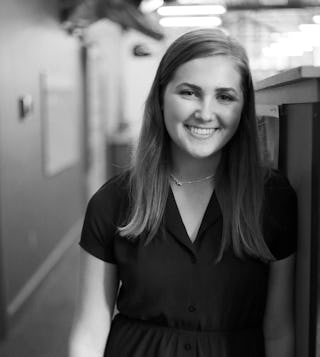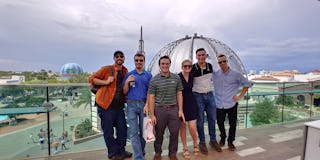UC Co-Op Program
NOV 12, 2020
“You practice what we teach.” That’s the motto of the University of Cincinnati Design, Architecture, Art and Planning (DAAP) Co-Op Program, an educational curriculum that places current college students in internships throughout their university education. Level has strong ties to the University of Cincinnati—both founder Greg Gibson and Project Architect Catie Truong attended the school as part of their architectural studies—and is excited to continue its support of the top-tier institution by aligning our internship program with the Co-Op opportunities. Level has had two interns this year as part of the Co-Op Program: Marisa Wilkens, and Emma Acomb. Here’s Emma sharing a little more about the program, its benefits, and how the work she’s doing at Level ties in to her academic goals.

Imagine walking out the doors upon college graduation with not only your degree, but a year and a half of on-the-job, real-world experience in your field already listed on your resume. Now couple that with several professional connections to respected firms that practice the kind of architecture you want to work in. That’s the University of Cincinnati DAAP Co-Op Program experience.
The UC Co-Op program is set up to alternate students between school and workplace, with the goal being both professional office experience as well as a practical application of the skills and design theories we learn in school. After one-and-a-half full years of academia, students are placed in an internship program the spring of their sophomore year, followed by internships during the fall of their junior year and the summer between junior and senior year. This means that students are already well-equipped with the basics of design principles when they enter into internships that allow them to put that knowledge into real-world practice.

Emma with fellow interns at a previous Co-Op Placement.
The selection process is designed to give both participating firms and students a say in the partnerships that are created. Out of a pool of around 100 firms, students select their top picks while firms denote their choices based on the students’ portfolio as well as rounds of interviews. The roster often includes a diverse array of firms, allowing students to select practices based on their interests and educational goals. Once the firm and student are paired up, the student meets with their advisor throughout the internship to make sure they’re staying on track with their chosen goals and objectives.
The UC Co-Op program is proven to give students a leg-up upon graduation. In a recent study, 75% of Co-Op students graduate with an offer for full-time work from one of their Co-Op employers. ARE pass rates for UC students are also among the best in the nation, with UC grads consistently breaking into the top 20 each year, often outperforming most Ivy League schools.
One of the reasons why I selected the University of Cincinnati was because of the Co-Op program, and it’s been a great fit for me. Sometimes concepts taught in school can get a little abstract, and there’s a general lack of parameters around assignments that doesn’t force the kind of critical thinking you need as an architect. University of Cincinnati’s internship program combats this problem in architectural education by making sure its students know both the architectural design principles in theory, as well as the practical construction considerations they’ll find in the real world.

A final axon drawing from Emma's first project of the summer called "Ice Pavilion," which investigated structural tectonics and ground condition in order to design a system that could display and provide drainage for an ice sculpture, using only a small amount of varied wood pieces.
I was especially drawn to Level because of the firm’s residential architecture portfolio. It’s something that I had really wanted to get experience in, but hadn’t had a chance to work on much in my academic training. I’ve already been able to work on several of the residential projects Level has on the boards, including the renovation of Bridgeview Bank in Uptown and an apartment complex for CEDARst.
In addition, I’ve also been able to work on my personal academic goals. The objectives I set with my advisor were to improve my communication skills and work in a diverse environment, and one of the few things I can thank the Covid-19 Pandemic for is providing ample opportunity for expansion in both those areas. There’s a lot of independence that comes along with working remotely, so communication is key in making sure nothing gets overlooked. I would also definitely classify the hybrid remote-work/socially-distanced office setting as a unique workplace environment!

The historic Bridgeview Bank in Uptown, Chicago currently under renovations.
I’ll be working with Level until December of this year, and I’m looking forward to helping the team wrap up several projects as well as spend quality time in the city before I return for my last year at UC. I’ve been really lucky to have previous placements in Chicago—even in a pandemic there’s still lots to explore and do! Between picking up redlines and learning the construction ropes, I’ve taken writing classes at The Second City and become a die-hard Stan’s Donuts fan. I’m really grateful for the time I’ve had with the team at Level, and very excited to take everything I’ve learned back for my last stint of undergrad.
- Emma